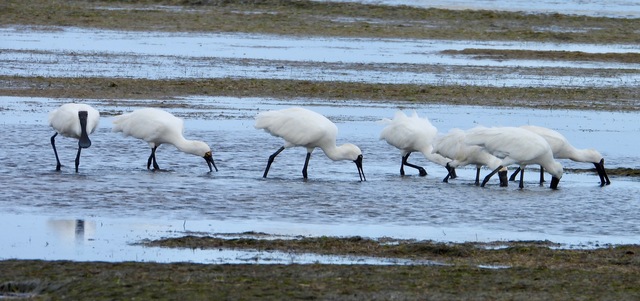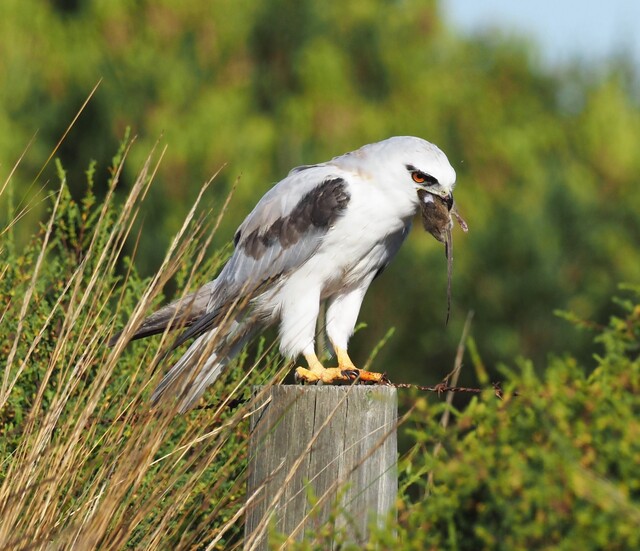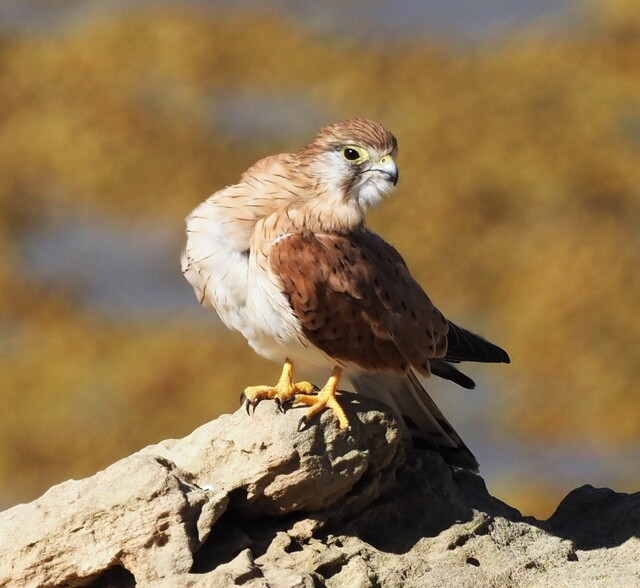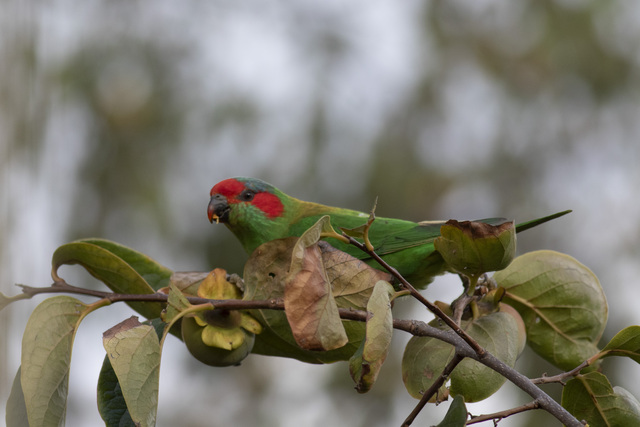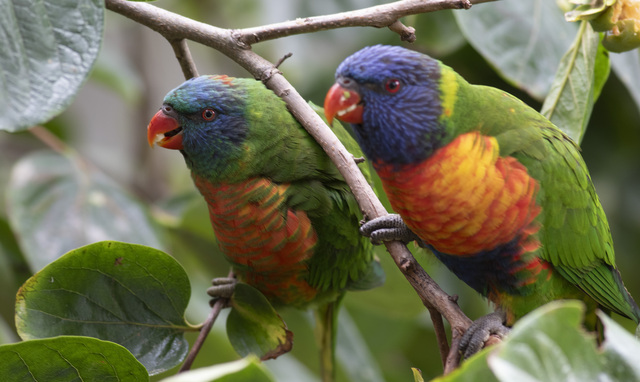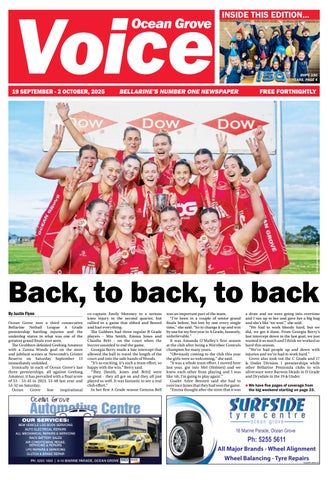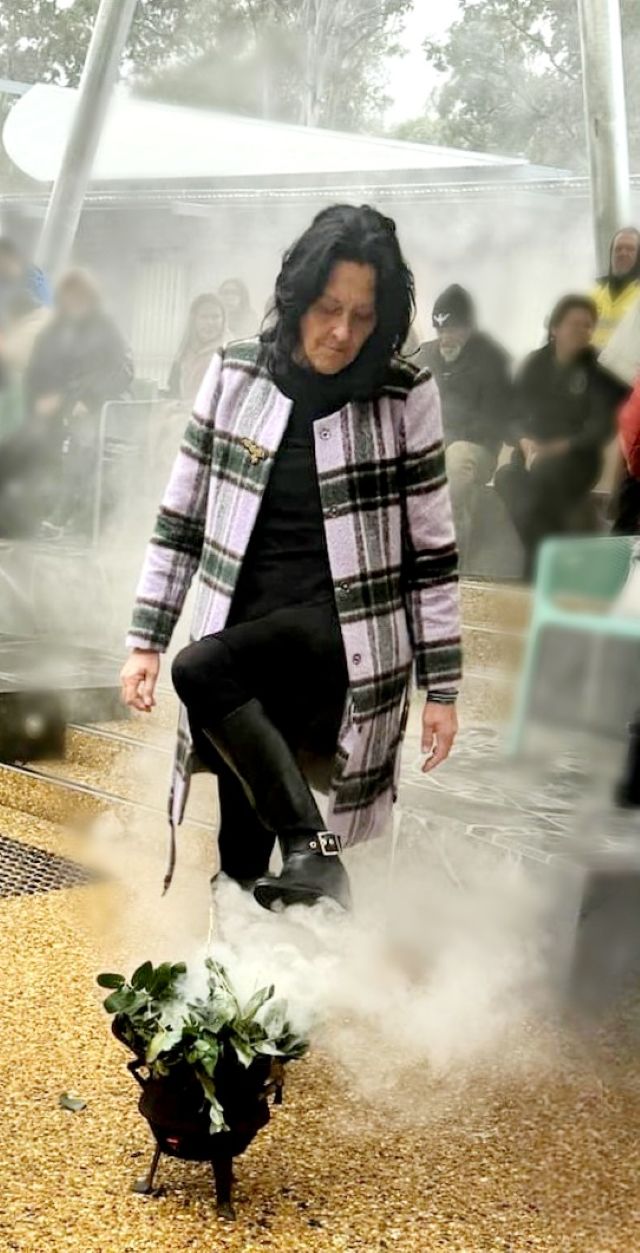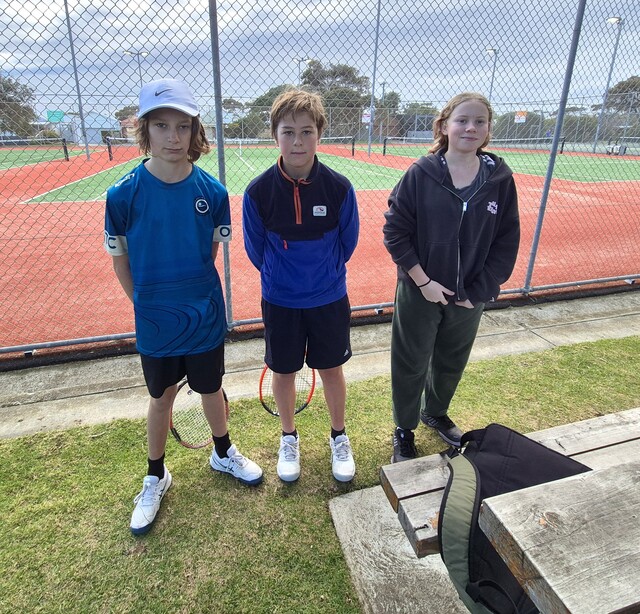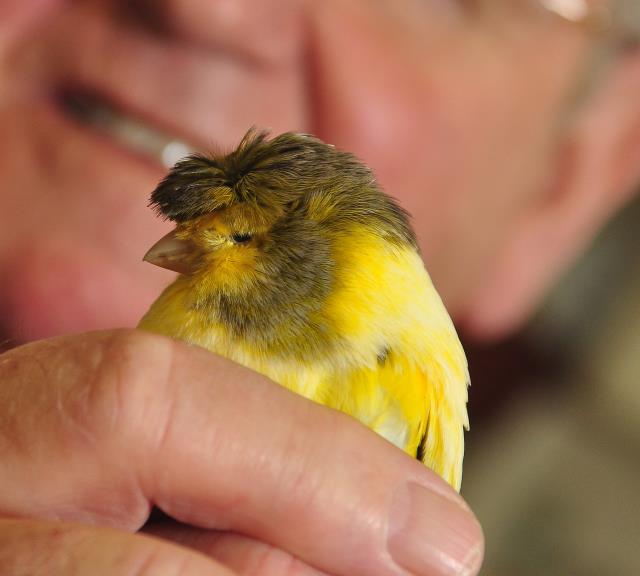I have two persimmon trees in my garden that have been full of fruit.
I picked half the fruit that I could reach and left fruit at the top of the trees for the birds.
Every day there has been a large flock of around 30 rainbow lorikeets eating the persimmons. They have made so much noise from calling and fighting with each other over individual fruit that I’m surprised that there hasn’t been a few brown goshawks lurking in the garden, as I think they could be heard quite a distance away.
They have also made such a mess, with persimmon pieces scattered under the trees, which have been much appreciated by common blackbirds and red wattlebirds.
Even New Holland honeyeaters have been attracted to the half-eaten persimmons. There have been a few musk lorikeets in the flock as well.
It’s been interesting to photograph the rainbow lorikeets, as there are some atypical hybrid lorikeets around the Bellarine Peninsula. Three Lorikeet species have been interbreeding and hybridising to produce birds with some unique markings in this area, namely escaped cage scaly-breasted lorikeets, musk lorikeets and rainbow lorikeets. This produces some very unusual looking lorikeets indeed.
I was also hoping that a few purple-crowned or little lorikeets may pay my garden a visit, but unfortunately, I did not spot any of these species. One of the birds in my photos looks like a musk lorikeet crossed with a rainbow, as it had similar head colouring to the musk species and was smaller in size like a musk lorikeet as well.
On my way home from work one day I had a close encounter with a brown falcon near Barwon Heads Airport. It stayed on the fence post while I photographed it.
My oldest friend, who I went to primary school with many years ago, has been sending me photos of a kiwi sanctuary and albatross sanctuary from the South Island of New Zealand, which has made me green with envy. My bucket list is growing.
I received an email from Carole, who was photographing Pacific gulls at the Queenscliff Ocean Beach when she noticed the differences in bill colour between the juvenile birds. One of the youngsters had a darker bill than the other. Carole knew previously about the variety of colours between adults and young however was unaware of the differences between the juvenile bills.
The immature Pacific gulls have dark brown wings, whitish mottled body and a white/brown bill that will slowly turn into a black-tipped yellow bill. The older the young bird becomes, the less brown the bill becomes.
Carole also ventured to Swan Bay near the pier, where she was amazed at the number of birds, as the water level is low enough for all to feed. Carole has never seen so many royal spoonbills all together feeding. The other birds in good numbers are pelicans, all different cormorant species, silver gulls and crested terns.
I received an email from Alan, who I spent a morning around Point Lonsdale lighthouse where two nankeen kestrels were roosting – a perch with a view. They were not shy, flying in as close as a few metres to pounce on crickets. A black-shouldered kite was also hovering nearby looking for a catch in the bushes whilst keeping an eye on the kestrels.
Alan took a photo of a black-shouldered kite about to swallow a mouse whole. Alan noted that Lake Victoria is awfully dry, as is Blue Waters Lake.
Two Latham’s snipe are still at Blue Waters Lake and the five juvenile swans have not been kicked out of home by their parents yet; they must be about seven to eight months old.
Alan wondered whether the swans would continue to breed or not due the dry weather and low water levels. They have had three clutches about six months apart and usually boot the teenagers out at about six months when the new chicks hatch, so Alan would have expected to see some new cygnets by now. Alan commented that perhaps the swans are better long-range weather forecasters than our BOM.

